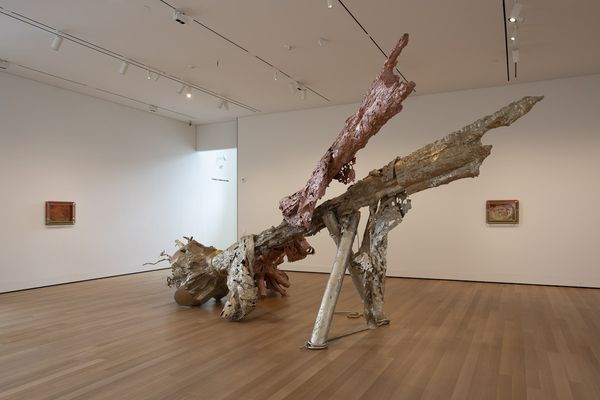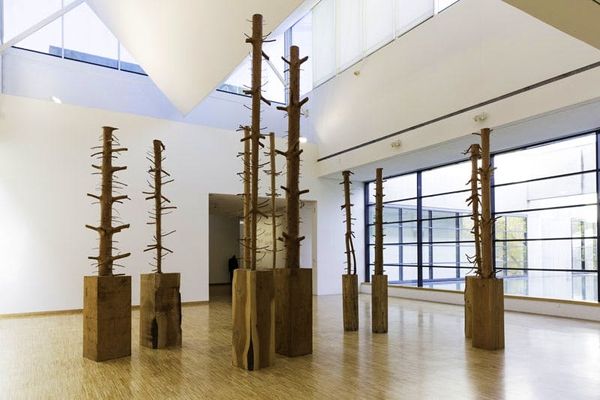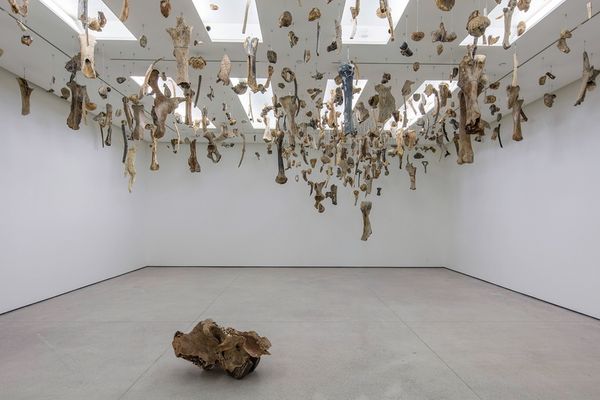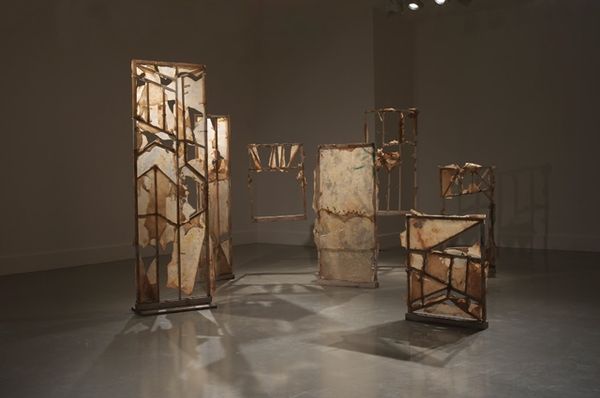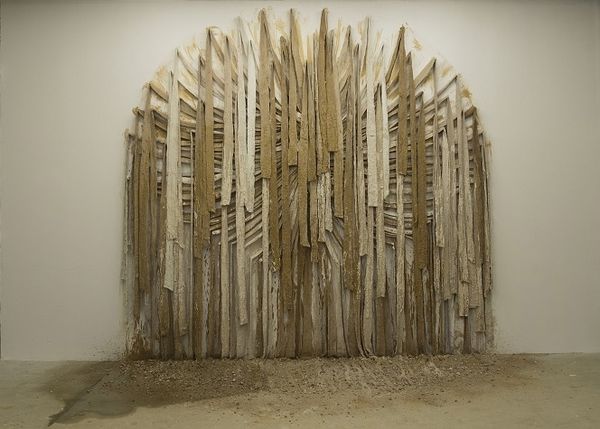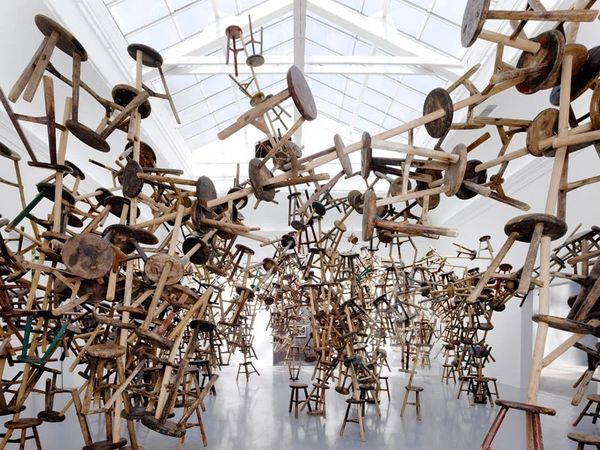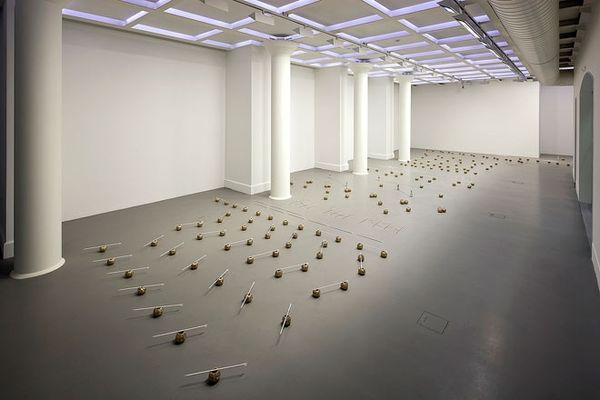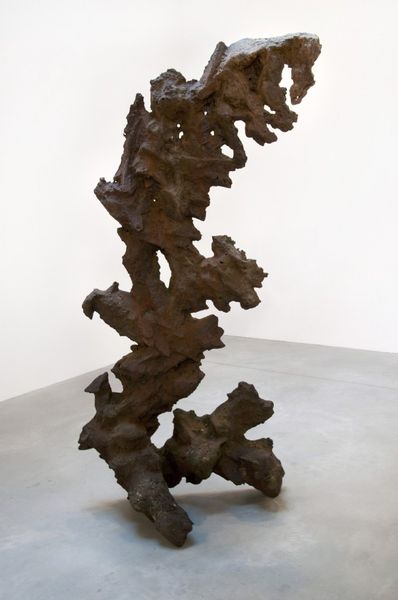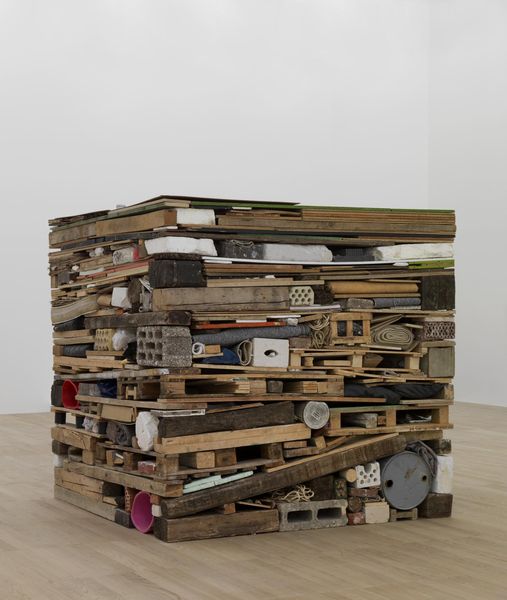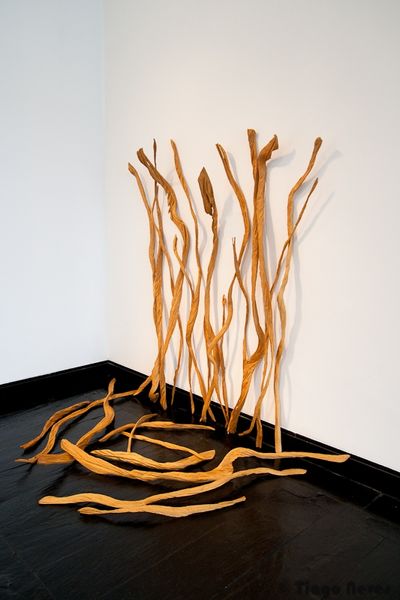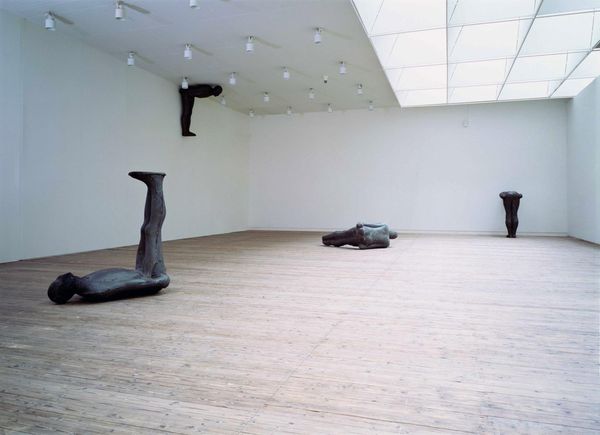
Copyright: Ai Weiwei,Fair Use
Curator: Standing before us is Ai Weiwei’s installation, "Fragments," created in 2005. It’s a powerful statement rendered primarily in reclaimed wood. Editor: My initial impression is one of organized chaos—a dismantled structure almost striving to rebuild itself. The fragmented forms create an interesting interplay of lines and voids. Curator: Indeed. The material here is key. These wooden beams and pillars were salvaged from demolished Qing dynasty temples. Ai Weiwei is deliberately engaging with the past, specifically with the destruction of cultural heritage during China’s rapid modernization. Editor: That adds another layer. Structurally, the salvaged wooden components still showcase their intrinsic textures, grain, and age, lending visual depth and authenticity. There are subtle geometries at play that emphasize the sculpture's balance between haphazard construction and rigorous geometric breakdown. Curator: Absolutely. The deliberate arrangement of what appear to be architectural ruins invites a profound meditation on history, loss, and regeneration, raising critical questions about China's headlong rush toward progress and its willingness to sacrifice the past. Notice the way it occupies the gallery space. It’s impossible to ignore the sociopolitical critique woven within it. Editor: And despite the solemn subject, there's an almost playful aspect. The work avoids strict formalism, creating more opportunities for visual reading. Its aesthetic force derives partly from the way in which its complex assembly reflects an embrace of change and flux. Curator: Precisely. Ai Weiwei encourages a visceral encounter, urging us to consider not only what has been lost but also what new forms can arise from destruction. This conceptual interplay and spatial reconfiguration of cultural objects challenge our understanding of tradition and change in contemporary China. Editor: The tension within this structure has opened a new awareness within me—not merely deconstruction and material transformation, but social responsibility. It makes one realize there are countless voices embedded in it that need to be addressed. Curator: Agreed. Its capacity to make its material history so potently evocative offers new perspectives regarding destruction and creativity that have truly resonated with me.
Comments
No comments
Be the first to comment and join the conversation on the ultimate creative platform.
